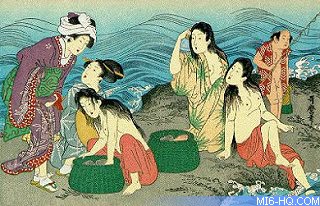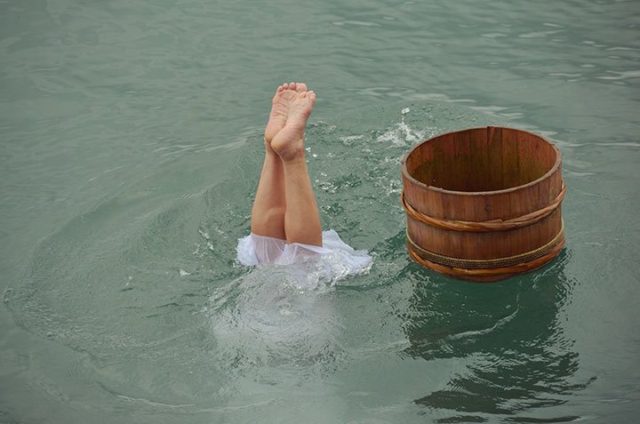It may not be long before we cease to see Japan’s traditional female free divers, known as Ama, in the flesh.
‘Ama‘ or ‘Uminchu‘ as they are popularly called in Japan are sacred women divers who are responsible for gathering oysters, pearls and other expensive objects in the Northeast Coastal Region.
Who are Ama?
Ama literally means sea divers. Women in the Toba region of Japan have practiced this tradition for more than 2000 years. They dive without scuba masks or air tanks making them traditional-sort-of sea divers, it is believed that if women stay under water they look younger longer and the prospect of marrying becomes easier.
In fact, they are so popular that James Bond fell in love with an Ama in the film ‘You Only Live Twice’.
The Ama Worship The Shinmei Shrine In Osatsu.
The shrine attracts a large number of tourists every year but the shrine is more than an ordinary place of sightseeing. Ishigami, the goddess enshrined here is believed to be the caretaker of Ama- who risk their life every day and their numbers are slowly dwindling.
Why Are Ama Losing Numbers?
The Ama’s have been unsuccessful in adapting to the changing times.
Post World War- II, the economy of the country shifted from farms to the cities and no more were women divers needed when technology could easily replace them. The Ama women slowly changed their occupation and moved from the Toba region.
Several were hired and moved to cities, what remained changed their profession to scuba diving.
The head priest at the shrine Imura was born in 1932 and has seen the decline of Ama with her own eyes. She says that it’s the education that has made women in the region want to do more than just dive.
This unique practice of women divers exists in the neighbouring country of South Korea as well where Ama can be found in the areas around Jeju Island.
But South Korean Ama have been granted fishing rights by the government and no fishing company can operate in their area, this has saved the Ama in South Korea from dying out.
In 1972 the number of Ama in Japan was 1200 and now it is just about 100.
Ama’s live a hard life today, sometimes described as a romantic relationship they have with the sea, Ama’s are dwindling and with them is dying this sacred tradition.
Industrialization Is Killing Ama
Industrialization is no doubt a need today but modernising economy at the cost of existent small-scale industries is destroying livelihood and traditions attached to the work.
A similar example can be seen in India where cottage industries of Central India are more or less finished. Hand-made textiles are made only for export purposes. Northern Indian sugar mills have also suffered the same fate.
Hence, it is important that such traditional occupations like the Ama should be saved. With their death, the Japanese tourism will suffer greatly and experienced and skilled divers will be lost forever.
Read On:
http://edtimes.in/2016/01/seabin-ocean-pollution/



































